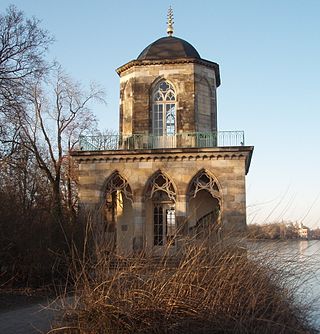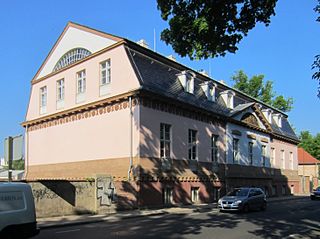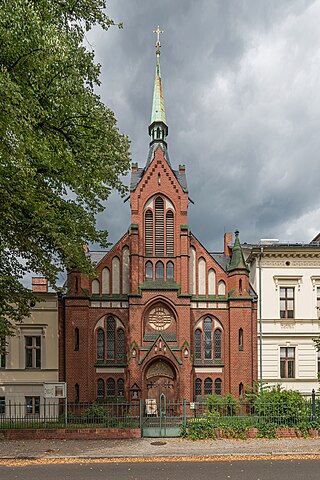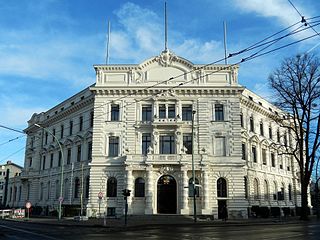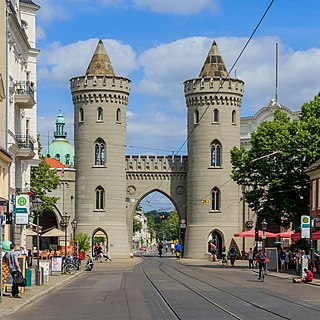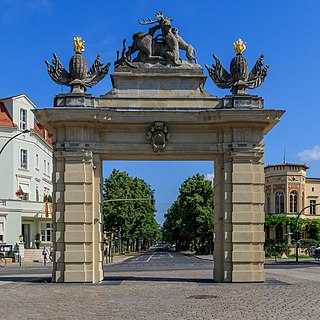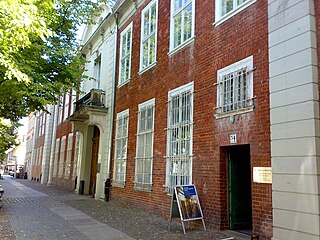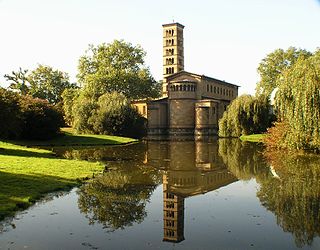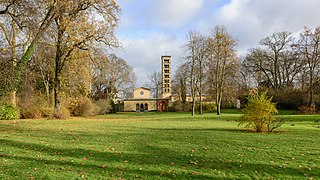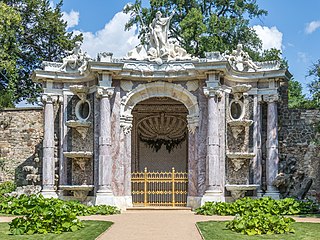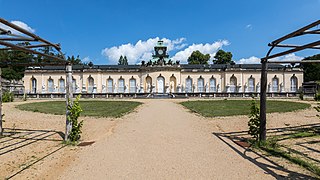Self-guided Sightseeing Tour #5 in Potsdam, Germany
Legend
Guided Free Walking Tours
Book free guided walking tours in Potsdam.
Guided Sightseeing Tours
Book guided sightseeing tours and activities in Potsdam.
Tour Facts
4.8 km
74 m
Experience Potsdam in Germany in a whole new way with our free self-guided sightseeing tour. This site not only offers you practical information and insider tips, but also a rich variety of activities and sights you shouldn't miss. Whether you love art and culture, want to explore historical sites or simply want to experience the vibrant atmosphere of a lively city - you'll find everything you need for your personal adventure here.
Activities in PotsdamIndividual Sights in PotsdamSight 1: Gotische Bibliothek
The Gothic Library as a two-storey tower pavilion made of sandstone is a building in the New Garden of the state capital Potsdam.
Sight 2: Palais Lichtenau
Built between 1796 and 1797 under King Friedrich Wilhelm II in the immediate vicinity of the New Garden, it is an outstanding monument of early classicist architecture in Germany due to its façade design and the quality of the preserved interiors. The authorship of the building is disputed between Michael Philipp Boumann and Carl Gotthard Langhans. Contrary to tradition and the name, the palace was probably not built for Countess Wilhelmine von Lichtenau and was not inhabited by her.
Sight 3: Evangelisch-Lutherische Christuskirche
Die Christuskirche ist ein denkmalgeschütztes Bauwerk im Potsdamer Stadtteil Nauener Vorstadt, Behlertstraße 9. Sie ist das Gotteshaus der evangelisch-lutherischen Christusgemeinde der Selbständigen Evangelisch-Lutherischen Kirche (SELK).
Wikipedia: Christuskirche (Potsdam) (DE), Website, Heritage Website
Sight 4: Verwaltungsgericht Potsdam
The Administrative Court of Potsdam is a court of administrative jurisdiction and one of three administrative courts in Brandenburg. The president of the court is Jan Bodanowitz.
Wikipedia: Verwaltungsgericht Potsdam (DE), Website, Heritage Website
Sight 5: Nauener Tor
Nauener Tor is one of the three preserved gates of Potsdam, Germany. It was built in 1755 and is the first example of the influence of English Gothic Revival architecture in Continental Europe.
Sight 6: Jägertor
The Jägertor from 1733 is the oldest surviving Potsdam city gate. It stands in the axis of Lindenstraße and forms one of the city exits to the north. It was named after the electoral Jägerhof in front of the city. The gate was originally part of the Potsdam excise wall, which was not used for fortification, but was intended to prevent the desertion of soldiers and the smuggling of goods. Since Lindenstraße cut diagonally through the former line of the Wall, the Jägertor was built diagonally to the course of the Wall.
Sight 7: Gedenkstätte Lindenstraße 54/55
The Lindenstraße 54/55 memorial in Potsdam commemorates the political persecution in both German dictatorships. The building, popularly known as the "Lindenhotel", served as a remand prison for political prisoners during the National Socialist era and was taken over after the war by the Soviet secret service NKVD/MGB and later the East German State Security in the same function. After the political turnaround, it became the House of Democracy and was used as a memorial from 2007.
Sight 8: Werner-Alfred-Bad

The Werner-Alfred-Bad is a former swimming pool in Potsdam, Germany. It was named after the German aviation pioneer Werner Alfred Pietschker. The facility at Hegelallee 23 has been a health centre since a total renovation in 2009.
Sight 9: Obelisk

The Obelisk entrance constitutes the eastern limit of Sanssouci Park in Potsdam, Germany. Following plans by Georg Wenzeslaus von Knobelsdorff, Frederick the Great ordered in 1747 that this exit from the park be built.
Sight 10: Grünes Gitter
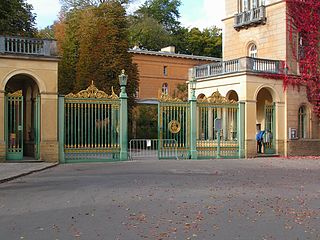
The Green Gate in Potsdam is the main gateway into Sanssouci Park and is situated at the end of the avenue to Sanssouci Palace. This begins as one of three roads that radiate from the Luisenplatz square. The gate was designed by Ludwig Ferdinand Hesse and was put up in 1854 as part of the construction of the Church of Peace. Its name comes from the colour in which the gate was painted. Additional ornamentation is provided by individual bars and points being picked up in gold leaf. The iron gate bears the initials of Frederick William IV.
Sight 11: Friedenskirche
The Protestant Church of Peace is situated in the Marly Gardens on the Green Fence in the palace grounds of Sanssouci Park in Potsdam, Germany. The church was built according to the wishes and with the close involvement of the artistically gifted King Frederick William IV and designed by the court architect, Ludwig Persius. After Persius' death in 1845, the architect Friedrich August Stüler was charged with continuing his work. Building included work by Ferdinand von Arnim and Ludwig Ferdinand Hesse also. The church is located in the area covered by the UNESCO World Heritage Site Palaces and Parks of Potsdam and Berlin.
Sight 12: Marly Garden
Get Ticket*The Marly Garden is a garden area in Potsdam's Sanssouci Park.
Sight 13: Neptungrotte
The Neptune Grotto close to the Obelisk entrance in Sanssouci Park, Potsdam, was created by Frederick the Great between 1751 and 1757 to beautify the park.
Sight 14: Picture Gallery
The Picture Gallery in the Sanssouci Park of Potsdam was built in 1755–64 during the reign of Frederick II of Prussia under the supervision of Johann Gottfried Büring. The Picture Gallery is situated east of the palace and is the oldest extant museum built for a ruler in Germany.
Wikipedia: Sanssouci Picture Gallery (EN), Website, Heritage Website
Sight 15: Winzerberg
The Winzerberg is located in Potsdam and is located east opposite Sanssouci Park. The entrance from the southern foot of the hill is formed by the imposing Triumphal Gate. The Winzerberg is part of the administrative inventory of the Prussian Palaces and Gardens Foundation Berlin-Brandenburg, is maintained by a support association that has already completely restored it and has been part of Potsdam's World Heritage Site since 1990.
Share
How likely are you to recommend us?
Disclaimer Please be aware of your surroundings and do not enter private property. We are not liable for any damages that occur during the tours.
GPX-Download For navigation apps and GPS devices you can download the tour as a GPX file.
